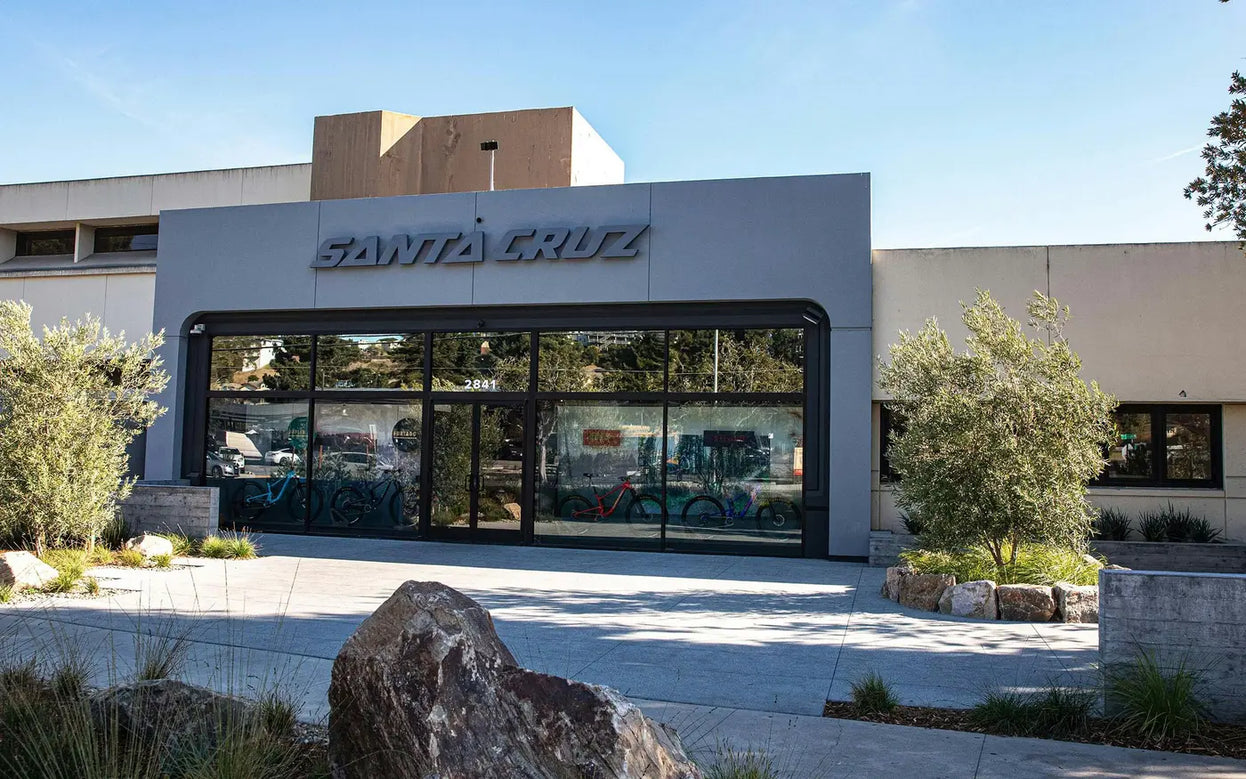Proportional Geo & Frame Stiffness
Proportional geometry and stiffness is our way of specifically engineering each frame size so that certain elements scale as frame size gets larger—so whatever your stature, there are no compromises with performance, efficiency, or fit. We’ve taken this concept to a new level with proportional rear-center, or chainstay length, and even frame stiffness. The result is a bike that’s dialed at every size.

Rear Center and Seat Tube Angle
Chainstay length and seat tube angle are matched to the frame size (seat tube angle steepens and rear center grows as frame size increases) so that every rider, no matter what height, gets the same balance of geometry and handling characteristics.

Frame stiffness tuned by size
We tailor stiffness for every size to make sure everyone gets the same ride quality. Bigger riders create greater forces on larger frames, but that's remedied with our size-specific frame stiffness tunes.
[Nerd alert] Read on for a deeper dive...
Ok, let's start with the basics.
Bike geometries have always been “proportional” or scaled across a size range, so what are we blathering on about here? Well, while many attributes of a bike—like reach, wheelbase, and stack height—have always grown larger with each successive bump up in size, others have remained fixed. Chainstay lengths and seat tube angles, for example, have traditionally been the same, even across bikes that come in five or six different sizes. While this is an easier way to make bikes, it creates performance compromises on larger bikes, particularly while seated and pedaling.
A few years ago we recognized that there was more to the common assumptions about fit and ride quality, so we set about developing each frame size with a rigorous look at how to make each one ride how it really should. To do so meant unlearning what we knew and relearning with a new set of parameters and conditions. One of those things we jokingly refer to as "butt reach".Content

Baby got back: ‘Butt reach’ explained
Our engineers use a scientific term to describe how relatively far back one’s derrière extends over the rear end when seated on the bike…they call it “butt reach.” And while it’s a funny (juvenile?) term, the dimension significantly affects both suspension performance and pedaling efficiency.
Butt reach is the saddles horizontal distance behind the bottom bracket at the heights we determined for each frame size. After quite a bit of measuring and surveying, we've come up with average seat heights for every size bike, and use this height as a basis for designing bike geo.
Why? Well, traditionally, saddle position/seat angle have been described by a variety of confusing or unhelpful metrics, like Effective Seat Tube Angle, which is measured from the top of the bike's headtube. This is much lower than anyone puts their seat for pedaling, and therefore is a fairly useless metric.
What all this butt reaching results in is an optimized front-to-rear weight balance and rider position, as well as better suspension performance when climbing.

Tweak, tweak, goose!
For years we’ve subtly tweaked our geometries for acceptable performance regardless of size. Thing is, “acceptable” isn’t really something we’re OK with. To get the high level of consistency we wanted required more than subtlety—it required some changes to our design thinking and philosophy.
To begin, we needed a consistent baseline. This resulted in us establishing a scale of average saddle heights by frame size. Our engineers arrived at these numbers by studying fit for the bike’s use-case scenarios, plus calculations based on human scaling factors.

Playing the angles
From there, we made changes to the actual seat tube angle on a frame-size-by-frame-size basis. As described previously, this angle determines how far rearward the saddle cantilevers over the rear wheel at a benchmark saddle height. And while this helped bring these numbers closer together, it alone didn’t fully close the gap.

The long and short of it
In addition to the seat angle, chainstay lengths vary in order to give every rider the optimum fore-aft balance on their bike.
The most obvious way to get scaled chainstays is to simply make longer or shorter swingarms as necessary. However (in addition to being logistically complicated), this would give each size bike different kinematics and amounts of travel. Instead, our solution is to adjust the placement of the pivot points on each size frame to move the swingarm, links, and shock forward or backwards to adjust the effective chainstay length.The riding result is a bike with the same riding characteristics, whether you’re on an extra small, extra large, or anything in between.
How Stiff is Your Frame?
Bigger riders mean bigger stresses on bigger frames, which makes sense—they’re heavier, so when they hit the same hole/corner/drop as smaller riders, more force is put into the frame. And if the frame is bigger–imagine the longer tubes of an XXL frame compared to an XS frame–it should be built to handle these greater forces across larger, inherently more flexible tube spans. If the stiffness is not tuned accordingly, the smallest riders are left riding something that feels like a railway tie, or the largest riders get stuck trying to corner on a wet noodle. To counteract this, we tune frame stiffness for every size by adding more carbon where it’s necessary on the larger sizes—ensuring everyone gets the same on-rails handling, regardless of size or stature.

Masters of Carbon
Masters of Carbon
Quality Bikes
Quality Bikes Since 1994

















